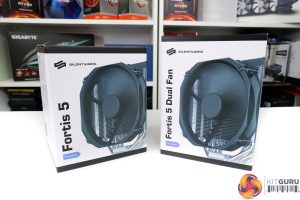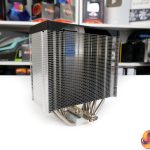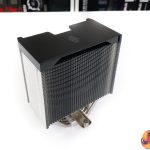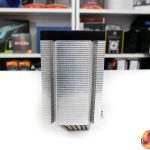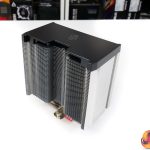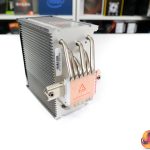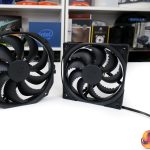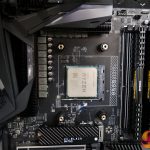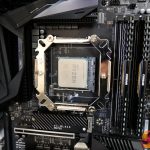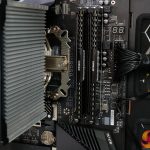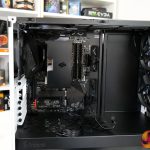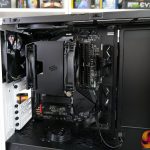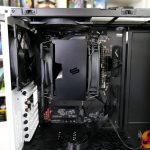We have already examined the Fera 5 Dual from SilentiumPC and were thoroughly impressed by what the relative newcomer to the CPU cooling market had to offer. Now we are taking a look at the company’s higher-end heatsink offerings; the single-fan, £50 Fortis 5 and the dual-fan, £55 Fortis 5 Dual.
Video Timestamps
SilentiumPC Fortis 5 & Fortis 5 Dual
In terms of accessories, SilentiumPC provides compatibility for modern Intel and AMD sockets (except TR4), a small tube of thermal paste is included, and both coolers get clips for dual fan setups.
Of course, only the Fortis 5 Dual comes with two fans. But other than that, the products are basically the same.
Starting out with a look at the heatsink itself, SilentiumPC utilises a standard aluminium fin array and chooses not to coat the fins to change their colour. There is a black plastic top shroud for some added visual pizzazz, though.
Fin spacing is not particularly dense, so there are clear signs of this heatsink being optimised for low-speed, low-noise fan usage. The heatsink is heavily asymmetric by design but there is clear guidance as to which orientation should be used; the flat side at the front – DIMM – side.
Dimensions wise, the fin array is 159mm tall, by 144mm wide, by 82mm thick. Though it doesn’t fill that entire thickness dimension because of the curved backside shaping of the array.
Running through the aluminium fin array are six 6mm diameter copper heatpipes. These are actually nickel-plated copper for improved appearance and corrosion resistance. Not that you really see them with that plastic top cover on the cooler. Though, the Heatpipe Direct Touch base shaves down the nickel plating and is bare copper for preferential heat transfer. Offset alignment of the heatpipes is used to try to distribute heat around the fin array.
By default, the Fortis 5 comes with a Fluctus 140 fan, but the Fortis 5 dual adds on a Fluctus 120 secondary fan. The Fluctus 140 PWM fan operates at 300-1400 RPM, which is an impressive control range, even if somewhat moderate speed at the top end. The Fluctus 120 PWM fan on the Fortis 5 Dual also runs at 300-1400 RPM, which is quite slow at the top-end for a 120mm unit.
Importantly, the low-speed values that the fans can run at give them strong semi-passive operation abilities. If your motherboard can support semi-passive cooling, these fans should also be able to do it.
Both fans utilise Fluid Dynamic Bearings and quote a MTBF of 100,000 hours. This – impressively – gives SilentiumPC the confidence to back up the cooler with an impressive 6-year warranty.
The mounting hardware is easy to install. Threaded stand-offs are screwed into the default AM4 backplate before a metal mounting plate is screwed into position. Thermal paste can then be applied before the cooler is sat and screwed into position.
Then, the fans can be attached via their metal clips. And you can daisy-chain the fan connectors if you’re short on motherboard headers.
The final mount is secure and looks good in my opinion, and the solidity of the installation is strong.
Thanks to the cooler’s asymmetric and offset design, there is plenty of room for graphics cards. And tall memory modules stand a slightly higher chance of fitting, though don’t necessarily count on this with the market’s biggest sticks! Do watch out for interference with tall VRM heatsinks on the rear-IO side, though.
Oh, and if you want any form of lighting, you’ll have to opt for the slightly more expensive – £60 – Fortis 5 ARGB single-fan version.
 KitGuru KitGuru.net – Tech News | Hardware News | Hardware Reviews | IOS | Mobile | Gaming | Graphics Cards
KitGuru KitGuru.net – Tech News | Hardware News | Hardware Reviews | IOS | Mobile | Gaming | Graphics Cards


